Table of Contents
Introduction:
one of the most frequently asked is “Just how long does it take to charge a Tesla? This is why electric cars are not the future, they’re here today changing how we view motor vehicles. Tesla is among the most recognizable brands in this conversion associated with innovation, luxury, and performance. However, along with the demand for these super high-tech cars is a queue of questions regarding their practicalities.
If you’re a Tesla owner already, thinking of getting in on the electric revolution, or just plain curious about it all — break out your sippy cup and organic freeze-dried kale chips while we go over these important distinctions for all things Tesla charging times. The details on how to plug in and power up a Tesla should be the only thing left for you to unravel now.
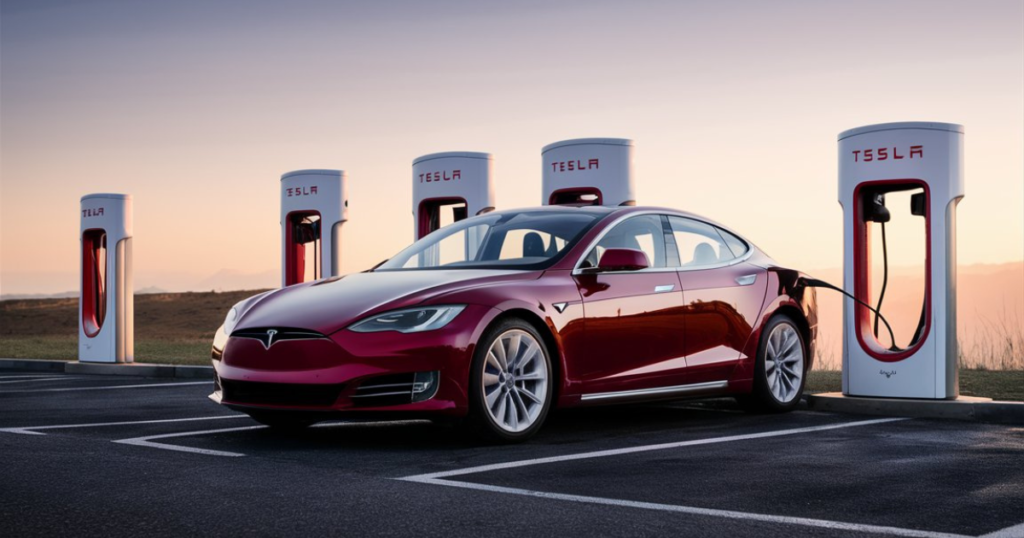
Types of Tesla Chargers
Tesla has a variety of chargers to meet different charging demands and situations. These different types of Tesla chargers can help buyers make an educated choice for their charging arrangement.
Level 1 Chargers
Level 1 chargers are the simplest of all charging equipment, designed for home use. They plug into a regular 120-volt household outlet. Add in the fact that with a Level 1 charger, it charges slowly at least, as most times power output is limited.
- Voltage: 120 volts
- Speed: About 3-5 miles per hour of charge
- Ideal For: Charging overnight at home, not frequent travelers
Level 2 Chargers
Level 2 chargers that use a 240-volt outlet, the same type used by large appliances such as dryers- are much faster than plugging your car only into your household’s standard dashed-properly three-prong outlet.
- Voltage: 240 volts
- Charge Rate: Approx 30 miles per hour
- Top Use Case: Daily home charging for long to ultra-long-distance drivers
- Installation: Usually professional installation is needed.
Tesla Superchargers
Superchargers, located at locations like gas stations and Nicrovast’s charging sites, are meant for quick “filling up” of multiple EVs each day; great on road trips.
- Voltage: ranging through; maximum of 480 volts
- Charge Time: Can add about 200 miles of range in around 15 minutes
- Best For: Out-of-town traveling, fast charging requirements
Tesla Destination Chargers
Tesla Destination Chargers: At hotels, restaurants, and shopping centers something a bit different. Medium-speed charging for Tesla owners needing to charge while out with the daily grind.
- Voltage: Typically 240 volts
- Charging Speed: ~25-30 miles of range per hour, which is similar to level 2 chargers
- Ideal For: Long-term parking trips, travel convenience
Mobile Chargers
Mobile chargers of Tesla can be connected by many types of electric outlets for the wall connector Type 2 and others where available. They consist of the 120V outlets and the 240V outlets which are relevant in various states of charging.
- Voltage: 120-240 volts
- Charging Speed: 3-30 miles per hour
- Best For: Emergency Charging
Infographic Table of Tesla Models with Charger Watt, Miles, and Time
Tesla Model S
| Charger | KW | Distance | Gained per Hour Charging Time (0-100%) |
| Supercharger | 250 kW | up to 172 miles | Around 1 hour |
| Wall Connector | 11.5 kW | up to 44 miles | 8-12 hours |
| Mobile Charger | 3 kW | up to 3 miles | 3+ days |
Tesla Model 3
| Charger | kW | Distance | Gained per Hour Charging Time (0-100%) |
| Supercharger | 250 kW | Up to 175 miles | Around 1 hour |
| Wall Connector | 11.5 kW | Up to 44 miles | 8-12 hours |
| Mobile Connector | 3 kW | Up to 3 miles | 3+ days |
Tesla Model X
| Charger | kW | Distance | Gained per Hour Charging Time (0-100%) |
| Supercharger | 250 kW | Up to 153 miles | Around 1 hour |
| Wall Connector | 11.5 kW | Up to 42 miles | 8-12 hours |
| Mobile Connector | 3 kW | Up to 3 miles | 3+ days |
Tesla Model Y
| Charger | kW | Distance | Gained per Hour Charging Time (0-100%) |
| Supercharger | 250 kW | Up to 162 miles | Around 1 hour |
| Wall Connector | 11.5 kW | Up to 42 miles | 8-12 hours |
| Mobile Connector | 3 kW | Up to 3 miles | 3+ days |
How long to charge a Tesla at home
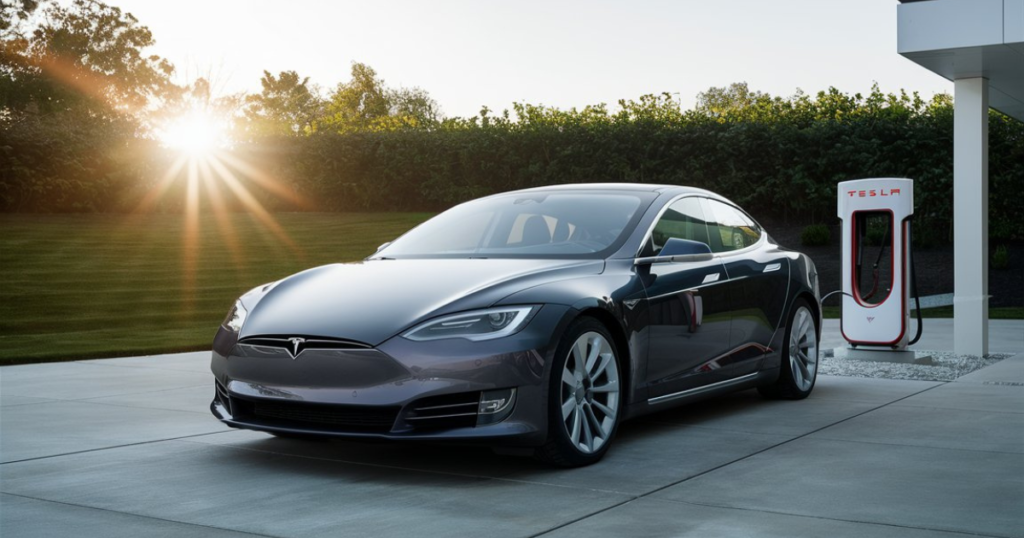
The cost to charge a Tesla at home can vary widely depending on several factors, such as the type of charger being used, which specific battery model their car houses, and how empty it is when they plug in. To sum up, here is an in-depth analysis of these things:
Types of Home Chargers
The primary options for home charging are
Level 1 Chargers:
- Voltage: 120 volts
- Amperage: 15 amps
- Charge: ~3-5 miles of range per hour
- Ideal For: Charging Overnight or Extended periods
Level 2 Chargers:
- Voltage: 240 volts
- Amperage: 30-80 amps
- Charge Rate: 15-30 miles of range per hour
- Suited to: Faster home charging; ideal for daily use
Charging Time by Model
Tesla owners need to deal with charging times as well, which also depends on the model. The amount of charging time needed for different models is as follows:
Model 3 Standard Range Plus:
- Level 1 charger: for full charge -20 to 30 hrs.
- 240 V Level 2 Charger: a full charge in 6-8 hours
Model S Long Range:
- Level 1 Charger: (activate for a full charge within 50-60 hours)
- Level 2 Charge: A full charge in approximately 10-12 hours
Model X Performance:
- Level 1 Charger: Charge to Full in 60-70 Hours
- Level 2 Charger: Charge time (from zero to full) in about 10-12 hours
State of Battery
The current state of the battery also plays a role in how long it takes to charge. For instance:
Empty Battery:
- Has Longest Charge Time (3 Hours from 0-100%)
Half-charged Battery:
- It has a much shorter period.
How fast does a Tesla charge at a charging station
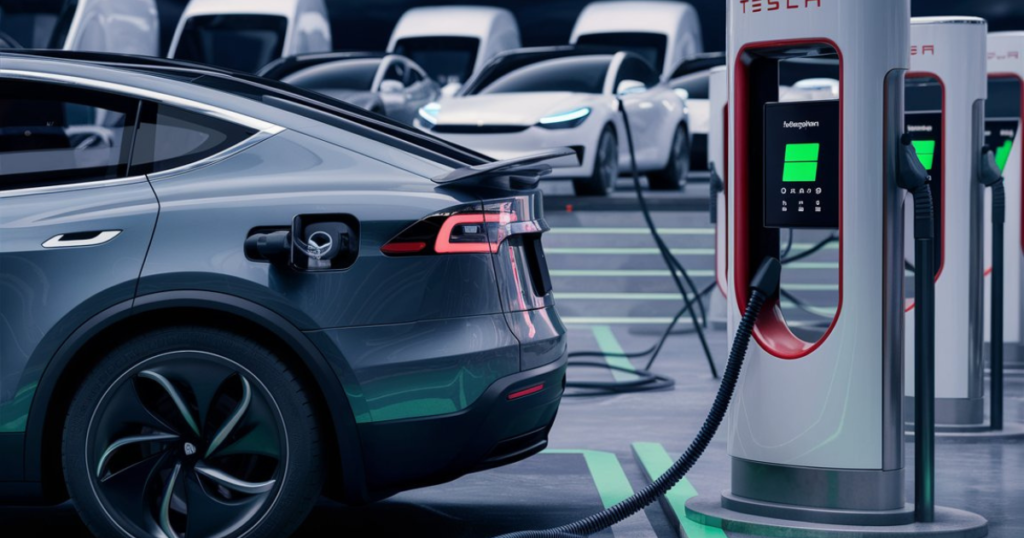
The same holds – and more so, in fact- for the length of time a Tesla will charge at an off-board charging station. Below is a breakdown:
Kinds of Charging Stations:
Level 1 (120-volt outlet):
- A standard household outlet.
- Charges 3 to around 5 Mi/hr (mobile).
- Ideal for overnight or emergency charging.
Level 2 (240-volt outlet):
- Commonly found in households, workplaces, and sometimes public are.
- Will charge at 15-30 miles of range per hour based on the vehicle model.
- It may take 4-10 hours for a full charge.
Tesla Supercharger:
- Strategically located in between Long Distance travel.
- 100 miles in 5 minutes / up to 200 miles in 15 mins.
- Full charging consumes 1-2 hours, although most people charge only 80% of the full capacity, extending battery life.
DC Fast Charger (Non-Tesla):
- Usually found in public places.
- Quick Charge: Charges up to 80% in ~30-45 minutes, supports QuickCharge and probably any other USB-C charging device.
How long does it take to charge a Tesla with a Supercharger?
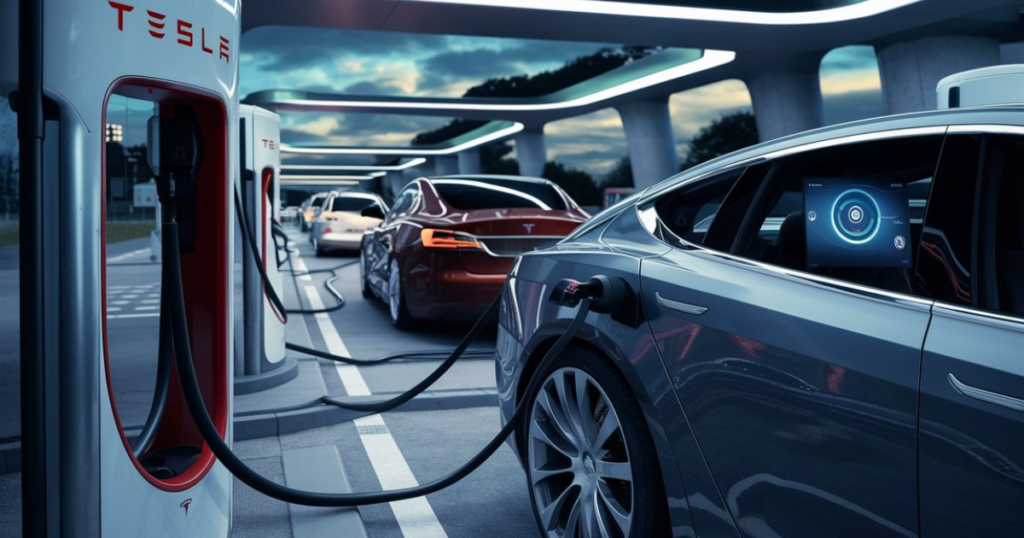
Designed for fast charging Tesla vehicles, superchargers by Tesla How long it takes to charge a Tesla vehicle with a Supercharger so that its battery level reaches certain points varies depending on the car model, power output of the Supercharger, and how much juice there already is in your electric fuel tank.
Charging Speeds and Time
Tesla Model S and Model X:
- Appearing 10% to 80percent in around half an hour (Source)
- Charging from empty (0-100 percent) might require around 70 minutes.
Tesla Model 3 and Model Y:
- It will take around 22-25 minutes to go from a nearly empty battery (10%) up to an 80-percent charge.
- It takes about 60-75 minutes for a full charge (from 0% to 100%).
Charging-Time Determining Factors
Battery Level:
- The charging taper escalates progressively from 80% to protect the battery.
Supercharger Version:
- The V2 Superchargers can deliver 150 kW power.
- The V3 stations for Superchargers can support up to 250 kW of power, thus reducing the need for charging.
Battery Temperature:
- The best charging time is ideal in case if the battery has a perfect temperature.
- Since a ‘colder’ battery is slower to charge, then perhaps their pre-conditioning may prove rather useful here.
Supercharging Costs
The cost of Supercharging is generally done per kWh or by the minute, depending on region and local utility rates. Tesla (and other connected cars, though it’s not all that common just yet) has integrated this into the car and shows real-time rates on its navigation system for owners of those vehicles.
Supercharger Network
Tesla Supercharger Network is quite robust, with over 25,000 Tesla Superchargers worldwide. The 3-phase-powered charging network is also expanding, as it has to if Tesla owners are going to have access to fast-charging routes for long road trips or in areas where they cannot charge at home.
A big advantage is that the majority of Supercharger stations are conveniently located near restaurants and shopping centers, allowing drivers to kill two birds with one stone while waiting for their vehicles to charge.
2021 Tesla Model 3 Supercharger charging time
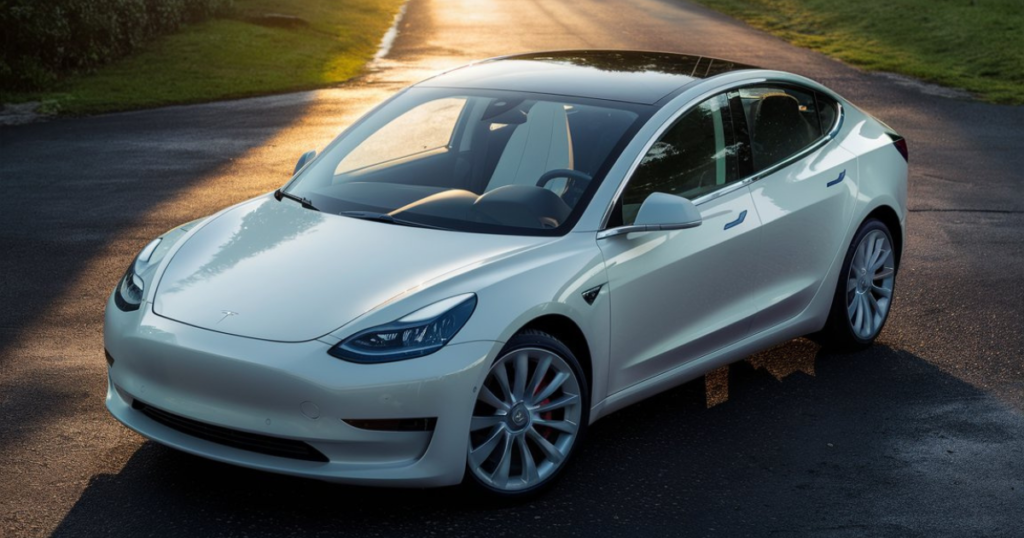
The Model 3 benefits from Tesla’s Supercharger network for fast charging But this is what you can expect from a Supercharger in terms of charging time.
Charging Rate and Time
Power for Charging Tesla Superchargers can be up to 250 kW. Based on conditions like state of charge and battery temperature, the Model 3 can use this.
You can get up to an 80% charge in just about 20 minutes to a half-hour. It’s the sweet spot for rapid charging speeds.
Charging from 80 to 100 percent is also slower up near full, so it can be more efficient time-wise for long road trips if the battery spends a bit less time in this high-state part of its state-of-charge-use-region. It requires an extra 20 to 30 minutes for the device to be fully charged.
There are a few factors when it comes to how long you should charge your vapor:
State of Charge (SoC):
Lower states of charge are charged faster. However, the speed taper after 80% hinders the fast-charging experience.
Battery Temperature:
For optimal fast charging, the battery temperature of high-voltage lithium-ion batteries should be between 20 and 40 degrees Celsius (68°F to 104 °F). Batteries charge slower initially until they warm up, cold.
Supercharger V2 vs. V3:
- On the other hand, V2 Superchargers can produce up to 150kW which is fine for a slightly longer charging pit stop.
- Model 3 will charge at V3 Superchargers up to 250 kW, as will Model S and Model X vehicles (but not with the upgrade).
How Long Does it Take to Charge Tesla Model X at Home?
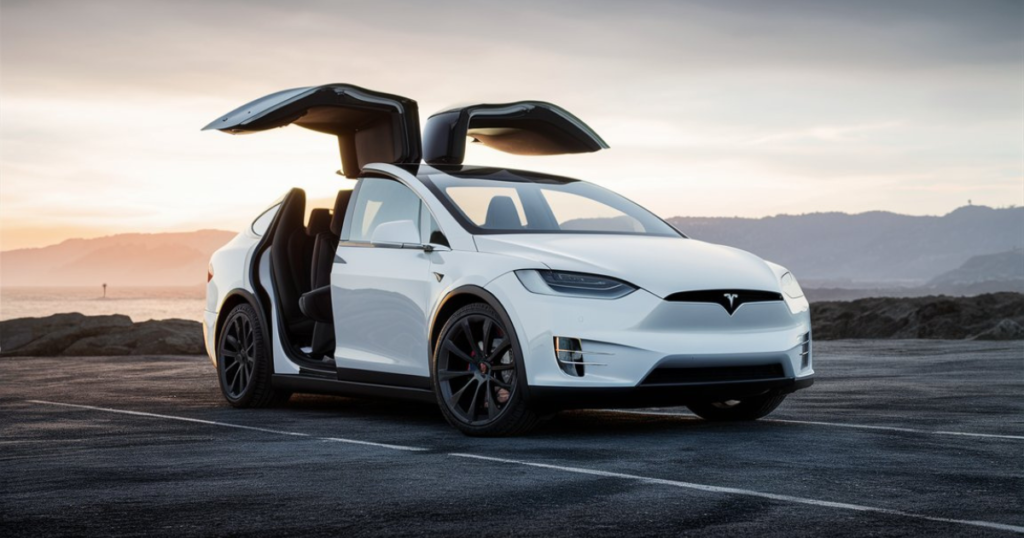
Home charging for a Tesla Model X varies based on the type of outlet or charger used. Here’s a breakdown:
Using a Standard 120V Outlet
- Slowest Standard 120V outlet charging
- Usually around 3-5 miles of range per hour crafted.
- For daily use, it is less practical as charging an empty battery to full power could easily take days.
A NEMA 14-50 Outlet (240V)
- The 240V outlet, which you may know as the NEMA 14-50 is better.
- Delivers about 20-30 miles of range per hour charge.
- Fully charges the Model X in 10 to 12 hours from empty
- Overnight charging: This is a common way to charge overnight.
Tesla Wall Connector
- The Tesla Wall Connector remains the best home-charging option.
- Available with various power ratings, typically 48 amps.
- Gives 44 miles of range per hourispens each powering.
- When you plug in an empty E-PACE PHEV to a home socket, it will take 8-10 hours (0-100%).
- It is a faster-charging option and best suited for those wanting their batteries done quicker.
How Long Does it Take to Charge Tesla Model Y?
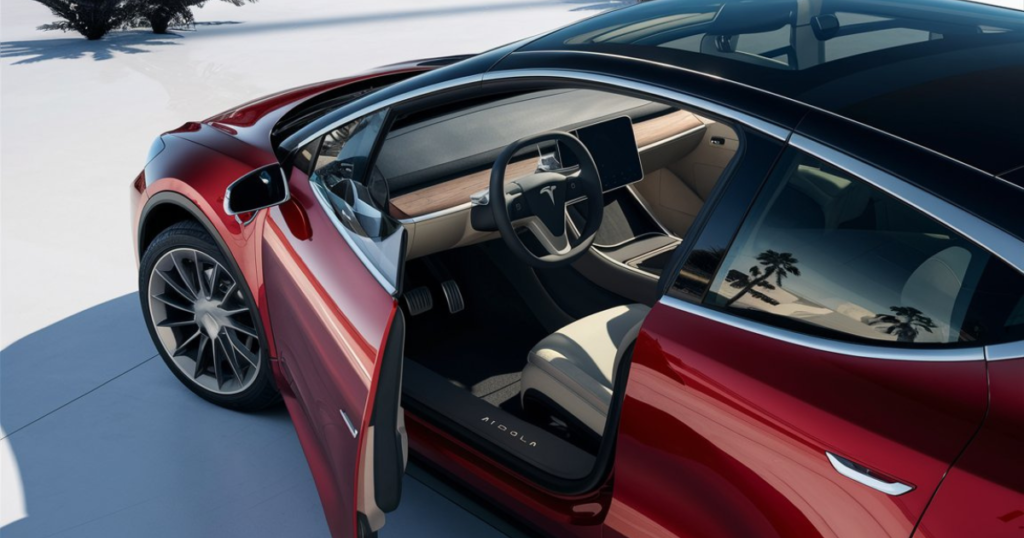
The Tesla Model Y electric SUV might have a long-range, but how much of it can we get to the charge? Considering their charging speeds can take quite a long time which depends on the brand of charger used. Here is a detailed breakdown:
Level 1 Charging – Standard -120V line
- Power Output: About 2-3 miles of range per hour.
- Full Charge Time: 30-40 hours for a full charge from minimum to maximum.
Level 2 charging (240 volt outlet)
- Power: 25 to 37 miles of range per hour, depending on the outlet capacity and onboard charger.
- To Full Charge: ~8-12 hours to a fully charged battery from 0% ->100%. Level 2 charging is what you’ll find at home, or in your local public lot, and it’s an awful lot faster than Level 1.
Tesla Supercharger (Direct Current Fast Charging)
- Output: Around 250 kilowatts.
- Charge time: Around 45-50 minutes to reach 80% (the rest slows down the charging speed to suit battery health maximization as it approaches full).
- As this tapering occurs, the final 20% can be as long as another 20-25 minutes leading to a full charge of about an hour to an hour and a half from dead empty up.
Destination Chargers
- Power Output: 11kW-22 kWSimilar to Level 2 chargers.
- Recharge Time: 8-12 hours (ideal for overnight charging at hotels or workplaces during a long-term stay)
In the end, that is what it gives owners: a range of charging possibilities that will meet some use-case; from just adding enough to make up for needs on Superchargers (via chargeable), to low-cost overnight at-home charging.
How much does it cost to charge a Tesla?
- Electrical Power: The rates of electrical power vary in this aspect through time of the day as well as through geographical area.
- Charging: Primarily used at home and Tesla stations which people frequently refer to as the supercharger.
Estimated Costs by Model
Tesla Model S
- Battery Capacity: 100 kWh
- Cost to Charge at Home: $13.60 ($0.14 per kWh)
- Supercharging Price: $23 (at a rate of $0.23 per kWh)
Tesla Model 3
- Battery Capacity: 75 kWh
- Cost To Charge Homes: $10.20 $0.14kWh
- Supercharging Price: $17.25 ($0.23/kWh)
Tesla Model X
- Battery Capacity: 100 kWh
- Home Charge: ($0.14/kWh) $13.60
- Supercharger Cost: $23.00 (Average.87c/kWh)
Tesla Model Y
- Battery Capacity: 75 kWh
- Cost of charging at home: $10.20 (at a rate of 14 cents per kWh)
- Supercharging: $17.25 ( assuming 23 kWh x $.
Charge Time Tesla Battery 10.4 to 11.5h at 220V
Originally, Tesla vehicles could be provided power from many sources such as 220V to charge them up. Such an outlet strikes the appropriate balance of charging speed and convenience for many Tesla owners.
Charging Details
- Power Output: A 220V outlet provides more voltage than a standard household plug, usually with only around 110V, and that can make the difference in charge times.
- Amperage: In practice, if you connect a Tesla to a common 220/240-volt outlet (the same type of electrical outlet your electric dryer uses) home or public charging station is between about 20-40 hours A complete charge time for Models S and X with the maximum output Genetron Home Charging System. The specific amperage will depend on the charger and model of the vehicle, however.
- Charge Speed: For some context, it would meanwhile take between 10.4 and 11.5 hours to charge a Tesla at home via such an outlet with around (60-80 miles of range for every hour that the vehicle is charging). Or to put it another way: an average Tesla with a medium-sized battery pack can be recharged overnight.
Charging Management via Mobile Apps
Tesla, within the electric vehicle world anyway, has a very powerful mobile app that does wonders for managing charging. The app comes with several different features to make it easier and more user-friendly for people who own Teslas to have greater control over when their vehicle is charging. Functionalities and Benefits
- Real-time Charging Status Monitoring: Get an up-to-the-minute look at the charging status of a Tesla vehicle. The app provides comprehensive detail, including the battery’s charge level as well as an estimate for the time remaining to a full charge and the current range covered.
- Remotely start and stop charging. This time-saver comes in handy when the ionizer is charging at a public location or far away from home, taking out all that walking to go back and check on your car.
- Charging notifications: Users can configure to receive charging notifications with critical events like charge completion and interrupted charging sessions. Users are updated and can act faster in case an error occurs.
- Scheduled Charging: The iPhone app lets users create charging sessions so they take advantage of low off-peak electricity rates. With this feature, you can reduce the cost of charging and make sure your car is fully charged by a certain time each day.
- Charge Location Settings: Users can define location-specific charging profiles. They can set custom charging limits between locations, such as home, work, or public chargers.
- Supercharger Availability & Navigation: The app helps find the nearest Supercharger stations and can show availability in real-time. It will also work with navigation to guide the driver to a Supercharger, which could be useful when planning long-distance trips.
The “magic” of managing the charging of a Tesla is not just that it’s easy, but the entire experience has been built to be intuitive through an array of features native to its mobile app. The perfect harmony between these features gives Tesla owners command of their charging from left to charge frequency and that flair for a great electric driving experience.
FAQS
Is a supercharger expecting to go quicker than charging Tesla at home?
No, you can expect slower charging times at home than when using a Supercharger station. Home charging typically involves a standard 120V wall outlet or dedicated 240V outlets, such as a Tesla Wall Connector. The process is slower than topping off at DC fast-charging stations (see below). Supercharger stations enable ultra-fast charging but run off high-powered DC fast charging.
One last thing to keep in mind is that Tesla’s charging times are based on the specific type of electric car you have. What effect does this have on the overall time?
But the charging times may change depending on what Tesla you have. This might, for example, mean that a Tesla Model 3 with a smaller battery gets more assistance (ie current) in the fastest parts of its LP result than would an older version S-model. On top of that, more recent models tend to have better charging mechanisms too and these can also factor into how fast they fill up.
will the impact on charging time between using a Tesla Wall Connector and plugging it into an ordinary household outlet be wonderful?
The Wall Connector, as seen in the image at the top of this article with a NEMA 14-50 plug for those Tesla pilot pig-tail adapters that won’t provide more than an “easily-plugging-in” charge capability, can deliver up to about 44 miles over each hour plugged into (with other one’s faster AC charging points) while additional normal-level standard-of-living-degree update staples providing significantly slower off trickle standards could only be typically trotting out anywhere between selection lower part and fewer than numerous several figures
Does the state of charge (SOC) matter when you think about how long it takes to fully charge a Tesla
So, the state of charge (SOC) should be taken into account when determining how long you need to leave your battery in charging mode. The Tesla battery will take longer to get 100% charged when it is nearly empty compared to having a higher SOC.
Keep things like battery health, and temperature in mind. Do these plays impact the time it takes to charge a Tesla?
There are a couple of variables that can greatly affect charging time like the health state of the battery and ambient temperature. A well-cared-for battery will charge as it should, but a worn-out (degraded) pack may take longer to complete one full charging cycle
Conclusion
The time it takes to get a full charge when charging your Tesla vehicle is dependent on many factors In addition to this, you can see also the list to remind you what should know before investing in a new coin:
Type of Charging Station:
Home Charging (levels 1 and2)
- Level 1 chargers connect to the standard 120V outlet and charge at speeds ranging from around 3-5 miles of range per hour.
- These charge in considerably faster amounts of time, offering around 15-30 miles per hour, and require a 240V outlet.
Superchargers:
- During peak Supercharger usage times, Tesla claims charging up to 200 miles of range should take about 15 minutes at a rate fast enough to bring the battery back up to approximately an 80 percent charge in another half hour’s end.
Battery Capacity and State of Charge
- The larger the battery pack, of course, the longer it takes to charge. For example, it will take longer to charge a Tesla Model S Long Range with a 100 kWh battery pack than the roughly 50 kWh in BMW i3 or even a Tesla Model 3 Standard Range+.
- This is usually because the charging standard backs off as it enters tapering, and while charging at 44 kW speeds from 0-80 % that accelerates we can typically expect to spend slightly more time in high-power regions than when just finishing up a charge session.
Environmental Conditions:
- Charging time can be affected by temperature Recharging speeds may be affected by cold temperatures due to the decrease in efficiency of batteries under colder weather.
If you use the thin LED tail lights instead of bulbs, we wouldn’t be surprised if the available kilowatt-hours are bumped up a bit from 91 to maybe \-90-kwh levels. It’s worthwhile mentioning that using air conditioning and heating as well as any other electronic systems reduces effective range even before they make an audio announcement.

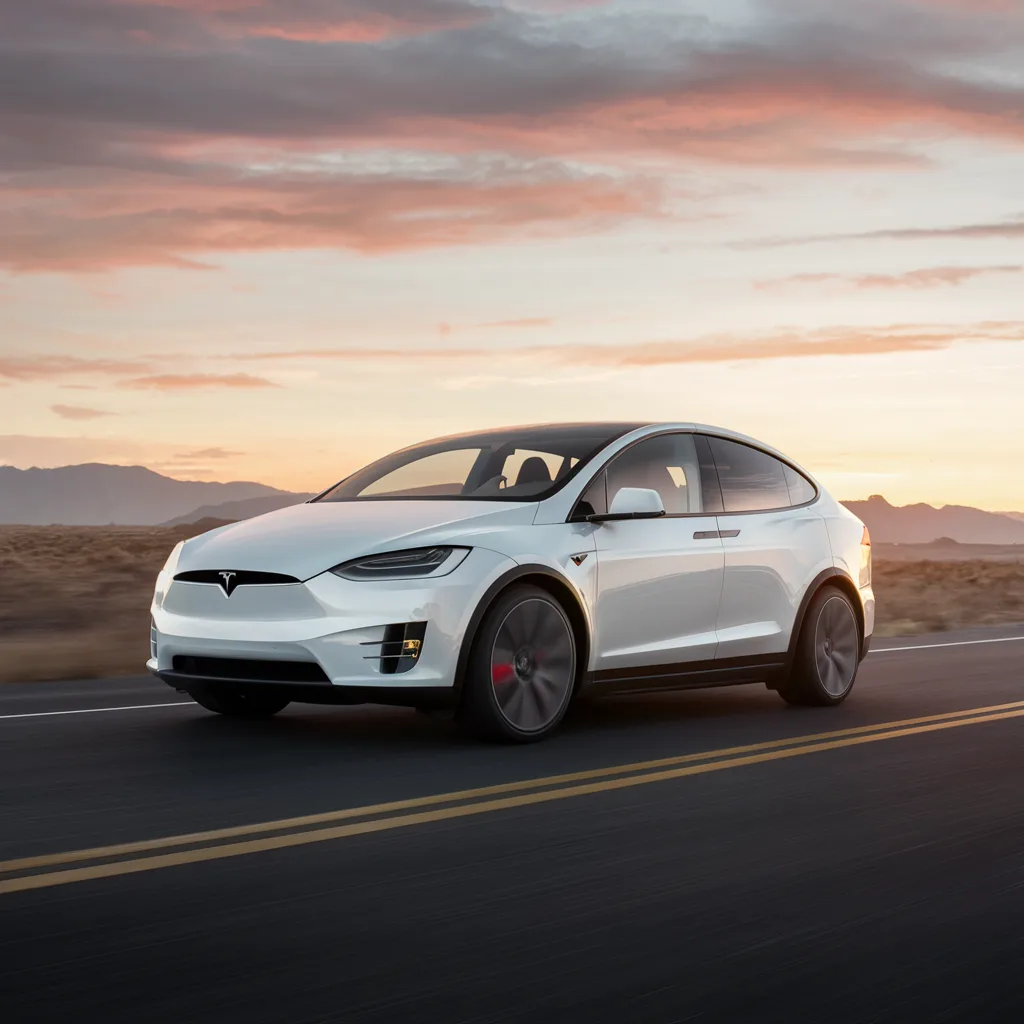
I like this blog very much, Its a rattling nice post to
read and incur info.Money from blog